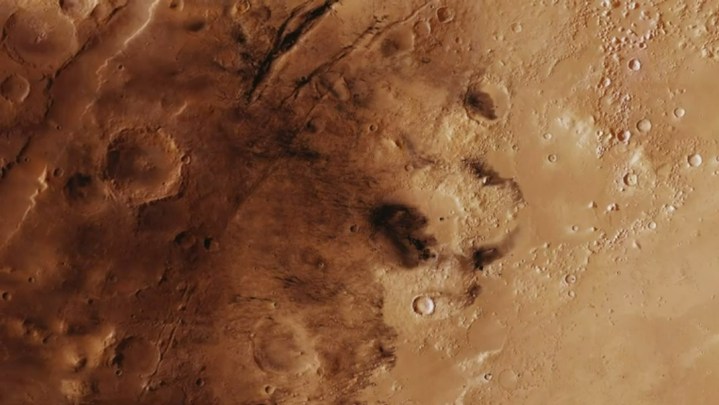
A new video from the European Space Agency (ESA) shows a stunning flyover of Mars’s Nili Fossae trenches that was constructed using data from the Mars Express mission. The dramatic landscapes of Mars include huge mountains like Olympus Mons, the largest mountain in the solar system, and deep canyons.
The trenches which make up Nili Fossae are hundreds of meters deep and are miles long, with a set of parallel trenches forming a structure called a graben. The trenches were formed when Mars was impacted by an enormous meteorite, which struck the surface billions of years ago and created an impact crater called Isidis Planitia. This impact basin is 1,200 miles across, making it one of the largest on all of Mars. Whatever struck the surface must have been immensely powerful, as it also created the trenches of Nili Fossae in addition to the crater.
The data used to create this video came from the Mars Express High Resolution Stereo Camera (HRSC) instrument, which takes detailed pictures of the martian surface. Scientists used these images ,along with digital terrain models of Mars to create a 3D rendering of the landscape, which could then be turned into a flyover video. The video first shows the trenches of Nili Fossae, then pulls out to show a view from above of the larger region — including the famous Jezero Crater where the Perseverance rover is currently exploring.
NASA did consider sending the earlier Curiosity rover to this region, as it has a variety of minerals there that form in the presence of water — suggesting that there was likely a river, lake, or other body of water here at some point in Mars’ history. However, it was eventually decided to send the Curiosity rover to the Gale Crater instead.
Nili Fossae has been the target of other visualizations in the past, like a striking map of minerals on Mars. “Scientists have focused on Nili Fossae in recent years due to the impressive amount and diversity of minerals found in this area, including silicates, carbonates, and clays (many of which were discovered by Mars Express’s OMEGA instrument),” ESA explains.
Editors’ Recommendations
Services Marketplace – Listings, Bookings & Reviews
